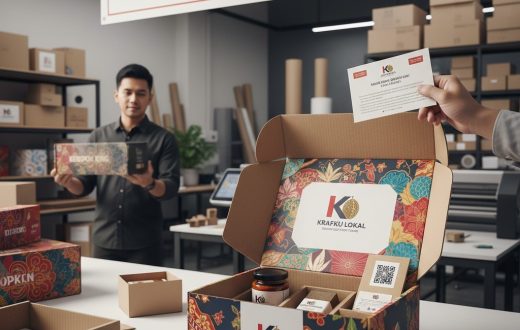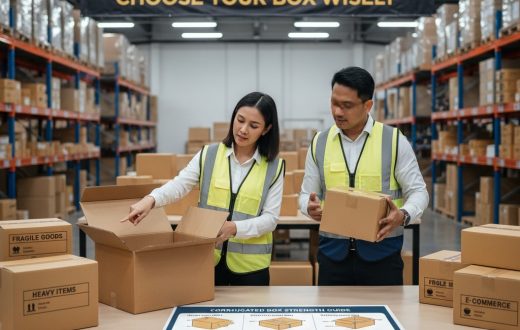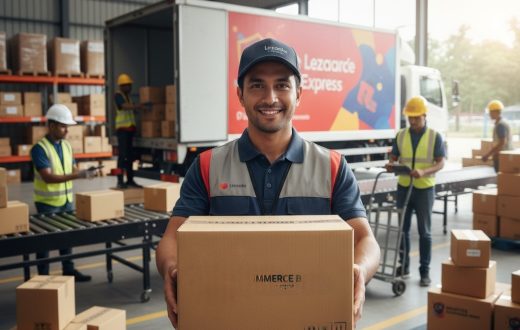Due to the widespread use of corrugated boxes, over 30% of the packaging market is made up of cardboard products.
For example, regular slotted containers are among the most commonly used types of boxes for storage and shipment.
Corrugated boards are inexpensive, strong, and unharmful to the environment. Boxes are not all created equally, though. In other words, they differ greatly in terms of compressive strength, thickness, chemical resistance, and other characteristics.
You’ll need to be aware of this while selecting an appropriate corrugated box for your packaging requirements. The amount of weight a box can hold directly depends on the strength and structure of the cardboard.
A weak box might break or fall over. On the other hand, a large box results in increased material costs and contributes to environmental waste.
Manufacturers and carton box suppliers employ a variety of testing techniques to assess how well corrugated boxes withstand outside forces so that users may choose boxes with confidence.
Here is a list of the most popular corrugated box testing methods used to determine the strength of corrugated boxes.
• Bursting Strength Test
• Edge Crush Test 2 Single
• Water Resistance of the Gluing
• Cobb Sizing Tester
• Paper Grammage and Thickness
• Puncture Resistance
• Scuff Resistance Test
• Box Compression Test
• Chemical Analysis in Corrugated Box Testing
1. Bursting Strength Test
Goal: To establish the precise weight that a box can support
The Mullen Test, also known as the Bursting Strength Test, determines how resilient the corrugated board walls are to pressure or force. In this test, pressure is applied to the corrugated box’s walls until they rupture using a rubber diaphragm.
Using hydraulics, the diaphragm is extended, and as it does, the corrugated board breaks under pressure.
2. Edge Crush Test
Goal: To evaluate the durability of pallet shipment, stacking strength, and material quality.
The Edge Crush Test, or ECT, is one of the most widely used techniques for testing the stacking strength of corrugated boxes. A corrugated box’s sides are constructed from sheets with three or more layers per sheet.
Typically, two flat sheets are sandwiched together by a thin sheet that has ridges and grooves. These ridges and grooves, commonly referred to as flutes, give a box its anisotropic strength.
This indicates that the boxes can withstand more force coming from one direction. This is ascertained using the edge crush test, right test, or flat crush test.
3. Water Resistance of the Gluing
Goal: To examine the effects of weather, moisture permeability, and water absorption.
Even though fiberboard can absorb and hold water, it’s crucial to evaluate the glue or seal for water resistance.
The FEFCO 9 standard is used to test the corrugated cardboard boxes’ glue for water resistance in some applications. In this kind of test, the glue lines are exposed while the corrugated board is submerged in water to examine the strength of the bond and water absorption.
4. Cobb Sizing Tester
Goal: To evaluate the box’s quality and porosity.
Corrugated fiberboards are made from a raw material that has a propensity to absorb and hold water.
A Cobb sizing tester is utilized to measure how much water is absorbed. Corrugated fiberboard is first exposed to water in this test. After that, pressure is used to force the sample’s water out.
Typically, despite the board being crushed by a powerful steel roller, not all of the water is removed, depending on the quality. The Cobb value is the weight differential brought on by the retained water.
5. Paper Grammage and Thickness
Goal: To determine the rigidity and quality of a box.
The two most important characteristics of corrugated fiberboard that affect the quality of the box are grammage and thickness.
The specifications for corrugated boxes include no reference to the “optimal” grammage or thickness; instead, they are entirely dependent on your needs.
For instance, when additional cushioning is required, a larger-thickness carton box is used. A high grammage is seen in thin boards with thick flutes.
These boxes are required when the packing has to be more sturdy and compact.
6. Puncture Resistance
Goal: To determine the durability and strength of cardboard during transportation.
The box’s ability to withstand the impact of a pyramid or triangular-shaped weight is tested using the puncture resistance test.
FEFCO 5 or ISO 3036 are two standards for corrugated box testing for puncture resistance.
7. Scuff Resistance Test
Goal: To make sure the cardboard box’s printed text can withstand scratching and wearing.
Packaging includes printing as a key component. When using various printing techniques, it’s crucial to assess how well labels or prints can withstand scratching or abrasion. Scuff resistance or rub proof tests are used for this purpose.
The Sutherland Rub Test is a type of testing that is commonly used in business. This method is used to test coated surfaces like paper, films, paperboards, and any other printed materials.
8. Box Compression Test
Goal: To assess a pallet load’s capacity for stacking.
The box compression test (sometimes referred to as the container compression test) measures the amount of stress that the box can support before deforming and the degree of that deformation.
It gives us a decent indication of how many boxes can be stacked on top of one another without the lower box’s contents being harmed.
Most companies that move boxes in bulk need this test, which is essential to determining the strength of boxes.
9. Chemical Analysis in Corrugated Box Testing
Goal: To ensure that the product composition complies with regulations.
Chemical analysis is vital for some applications where the composition of fiberboard and its resistance to specific chemicals are examined.
A microscopic study of the board is part of the investigation of the fiberboard to determine the types of paper that were used to create it. Additionally, the pH and moisture content of the board are both determined.
In Closing
With the aid of corrugated box testing methods, you can have a box packaging supplier deliver the best kind of box for your business needs.
A Box Maker’s Certificate stamp that indicates specifications and box strength is present on the majority of boxes. The ECT value, for instance, enables you to determine how much weight a package can support.
On the other hand, the Box Compression Test helps figure out how well boxes can be stacked, which is important for shipping and moving.







